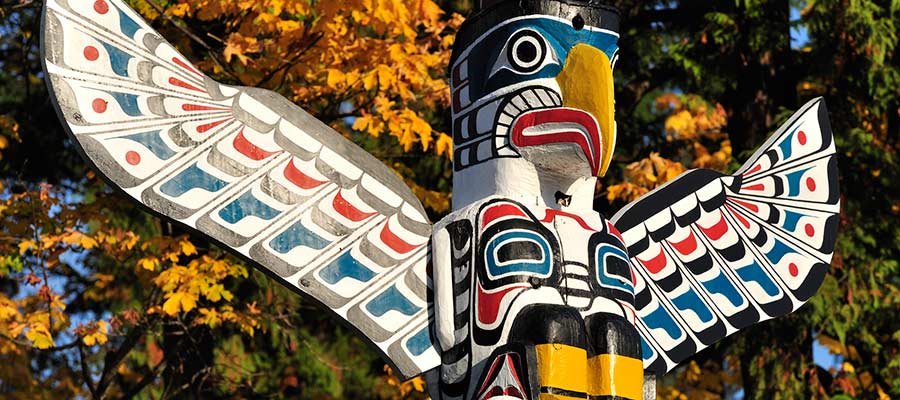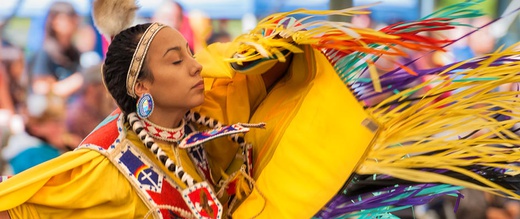The views expressed in our content reflect individual perspectives and do not represent the authoritative views of the Baha'i Faith.
This series of essays on “Native American Messengers of God” began with a reference to Abdu’l-Baha’s “Tablet to Amir Khan” in Part #1. Recently, a reader pointed out to me that, in Part 9 of this series (“Native Messengers of God: One Baha’i Perspective”), I had promised to write about Abdu’l-Baha’s answers to Amir Khan’s four questions.
It turns out—my apologies—that I only followed up on two of the questions so far. Question #2 was addressed in Parts #11 and #12 (“Native Messengers of God: One Native Baha’i’s Perspective” and “Manifest Destiny and Native American Religion”). I wrote about Question #4 in Parts #10 and #15 (“God Has Sent Messengers to All People” and “Native Messengers of God: Another Baha’i Perspective”).
To remedy this oversight on my part, let me insert the hypothetical four questions in those places within the “Tablet to Amir Khan” where Abdu’l-Baha apparently responded to each question:
TABLET TO AMIR KHAN
He is God!
[Question #1. How can one become more skillful in arts and crafts?]
[Answer] O servant of God! You had complained about [your] inability to attain perfection in more than one craft. A multiple number of crafts cause [one’s] perceptions to become scattered. Endeavor in one of these crafts and strive and exert yourself to attain perfection therein. This is better than having a number of crafts (all) remain in a state of imperfection.
[Question #2. Did the ancestors of Native North Americans cross over the Bering Strait?]
[Answer] In ancient times the people of America were, through their northern regions, close to Asia, that is, separated from Asia by a strait. For this reason, it hath been said that crossing had occurred. There are other signs which indicate communication.
[Question #3. What is the fate of people who do not know of God’s latest Messenger?]
[Answer] As to places whose people were not informed of the appearance of Prophets, such people are excused. In the Qur’an it hath been revealed: “We never chastise, until We send forth a Messenger.” (Qur’an 17:15.)
[Question #4. Were Messengers of God sent to North America?]
[Answer] Undoubtedly, in those regions, the Call of God must have been raised in ancient times, but it hath been forgotten now.
By way of commentary, here are some further thoughts on the four implied questions posed by Amir Khan to Abdu’l-Baha:
- It’s better to perfect one art (or craft), than to dabble in several.
- The Bering Strait hypothesis is a theory with evidence. (But, as the native writer Paula Bidwell has pointed out, it’s not the theory itself that’s the problem, but rather the misuse of the theory.)
- In principle, with knowledge comes spiritual responsibility.
- The “call of God” clearly refers to “Messengers of God.” “Forgotten” is a matter of degree to which the teachings of those Teachers have been lost or neglected.
What about the implications of each of Abdu’l-Baha’s answers to these four questions? Here are my thoughts along those lines:
- Perfecting one skill is preferable to being “a jack of all trades and master of none,” as the saying goes.
- Scientifically, the Bering Strait migration theory may prove to be right or wrong, depending on where the evidence leads. Politically and socially, it may prove to be right or wrong, depending on how the theory is used or misused in relation to the indigenous peoples of the New World. Abdu’l-Baha didn’t give a definitive answer to this question—instead, it seems he left the matter to scientific investigation, which is still ongoing and not yet definitive.
- In the “Information Age,” Question #3 has little bearing today, since most of the Earth’s people have access to information about the teachings of the prophets.
- Abdu’l-Baha’s apparent confirmation of the past existence of Native messengers of God has profound implications for the present and future.
In the final question, what are those implications? One is recognition and respect for Native American and Native Canadian spirituality. Here, the principle of “parity” is important. “Parity” (equal status) is not only necessary spiritually, but socially, economically, and politically (in terms of Native “sovereignty” or a “nation-to-nation” relationship). Think of “parity” as “on a par with.”

Take the example of the Baha’i Community of Canada. Here is an excerpt from their 1993 statement, “Submission of the Canadian Baha’i Community to the Royal Commission on Aboriginal Peoples”:
Aboriginal cultures have been distinguished by a worldview best characterized as spiritual in nature. It is significant that Aboriginal leaders and members of Aboriginal communities at the grass roots refer so frequently to the Creator and to the human spirit when they approach the discussion of social problems. Failure to appreciate the gap between this approach to social reality and that of the dominant culture explains much of the misunderstanding and injustice between the Aboriginal peoples of this country and the dominant majority culture. …
The Aboriginal peoples have been among the most intensely affected victims of the dominant social forces operating in ignorance, or in systematic neglect, of spiritual principles fundamental to human happiness and the common weal. …
It has been the failure to apply spiritual principles and moral standards to the relationship between Canada’s Aboriginal peoples and the population of the immigrants and their descendants that lies at the heart of the most disturbing problems now faced by our country. And moral standards take their authority from God, the Creator.
Furthermore, the existence in Aboriginal communities of strong systems of religious belief and practice represent important resources for social development that must not be overlooked. The survival among Aboriginal peoples of an evident religious inclination and spiritual aspiration must be supported and encouraged at official as well as informal levels in whatever programs and policies are recommended by the Commission.
This statement, made on behalf of the Baha’i Community of Canada to the Royal Commission on Aboriginal Peoples (an agency of the Government of Canada), is remarkable for its recognition of Native Canadian spiritual “systems” as “important resources for social development.”
The Tablet of Amir Khan was occasioned by four simple questions—but the answer to Question #4 has profound social implications in all four sacred directions.
You May Also Like
Comments

















I just got a notice of your comment by email notification, although I do not see your comment posted online yet. But I thought I’d post this quick reply.
First, thanks for posting a link citing a peer-reviewed journal article:
Schroeder KB, Jakobsson M, Crawford MH, Schurr TG, Boca SM, Conrad DF, Tito RY, Osipova LP, Tarskaia LA, Zhadanov SI, et al.: Haplotypic Background of a Private Allele at High Frequency in the Americas. Molecular Biology and Evolution 2009, 26:995-1016.
What this study evidently shows, according to the Science Digest summary, is this:
“Our ...work provides strong evidence that, in general, Native Americans are more closely related to each other than to any other existing Asian populations, except those that live at the very edge of the Bering Strait,” said Kari Britt Schroeder, a lecturer at the University of California, Davis, and the first author on the paper describing the study.
The article you’ve cited points to a shared ancestry among Native Americans for more than 12,000 years. However, diverse origins appear to have contributed. See e.g.:
“Whole-genome studies have documented that most Native American ancestry stems from a single population that diversified within the continent more than twelve thousand years ago. However, this shared ancestry hides a more complex history whereby at least four distinct streams of Eurasian migration have contributed to present-day and prehistoric Native American populations. Whole genome studies enhanced by technological breakthroughs in ancient DNA now provide evidence of a sequence of events involving initial migration from a structured Northeast Asian source population, followed by a divergence into northern and southern Native American lineages. During the Holocene, new migrations from Asia introduced the Saqqaq/Dorset Paleoeskimo population to the North American Arctic ~4,500 years ago, ancestry that is potentially connected with ancestry found in Athabaskan-speakers today. This was then followed by a major new population turnover in the high Arctic involving Thule-related peoples who are the ancestors of present-day Inuit. We highlight several open questions that could be addressed through future genomic research. . . .
We conclude by emphasizing that true understanding of the population history of any group or region cannot be achieved through genomic studies alone, but requires a synthesis of insights from genomics with information from anthropology, linguistics, archaeology, and sociology. It will also be important to involve Native American organizations and communities in dialogues about these studies, as their perspectives have been underrepresented in these studies in the past.”
— Pontus Skoglund & David Reich, A genomic view of the peopling of the Americas, Current Opinion in Genetics & Development, preprint first posted online Jun. 15, 2016; doi: http://dx.doi.org/10.1101/058966.
Christopher Buck
http://news.nationalgeographic.com/news/2013/11/131120-science-native-american-people-migration-siberia-genetics/